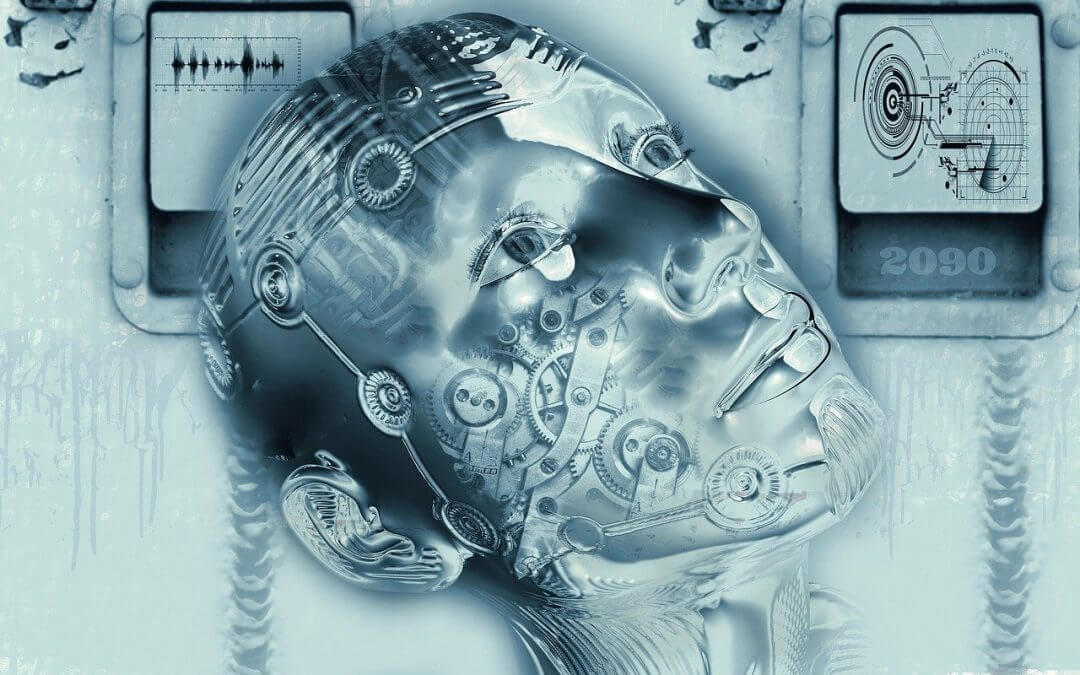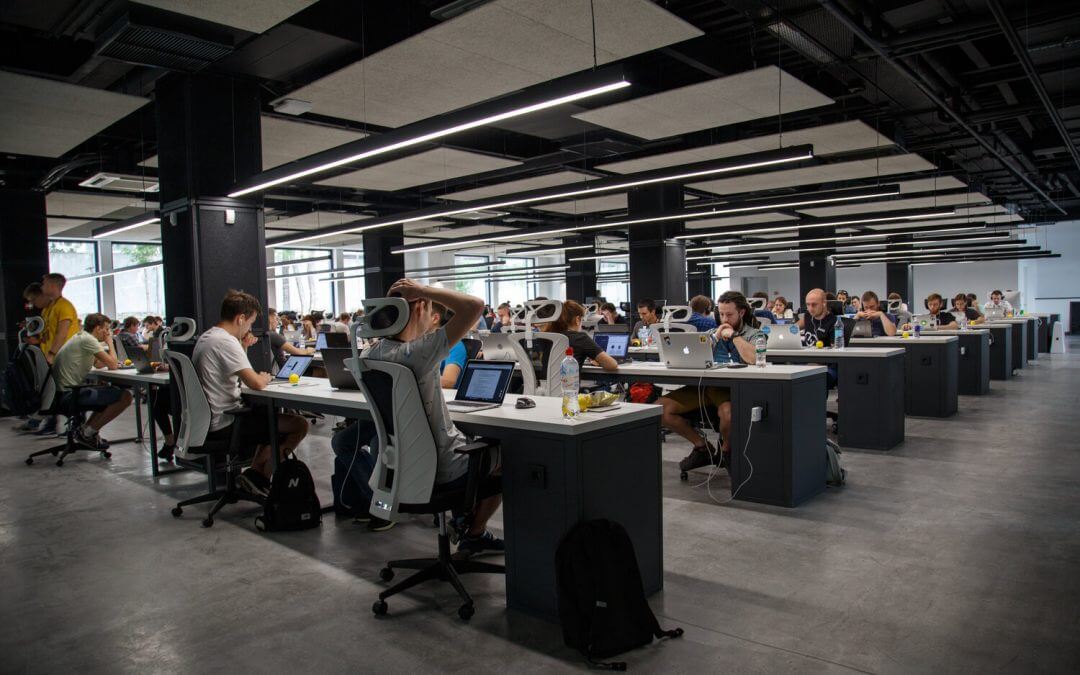The EOS Model® provides a useful foundation for businesses, but it falls short in addressing key aspects of creating an growth. By incorporating additional elements from the Gravitas 7 Attributes of Agile Growth® model, businesses can create a more comprehensive system that promotes growth while maintaining smooth operations. Focusing on Leadership, Strategy, Execution, Customer, Profit, Systems, and Talent, the 7 Attributes of Agile Growth® offer a more encompassing approach to achieving success.

The Robots are Coming
The cry that “The Robots are Coming” is not new. Robots and AI have been replacing humans for some time; however, COVID has accelerated that trend. As businesses seek to get up and running again, they realize that it will be more difficult with humans and social distancing. Adopting robots and AI allows businesses to keep operating and reduce health risks to human workers. Thus companies are turning to industry giants like Fanuc Corp., Keyence Corp., and Harmonic Drive Systems Inc.
In addition to the industry giants, many companies are providing AI and robotics for specific industries. Brain Corp reports its customers are employing robots about 13% more than they were in the months before the pandemic. The autonomous cleaners can do basic cleaning tasks “so that workers can use their time to do essential sanitation. Robots are something a lot of our customers are looking at now, and it’s making a big difference.” says Phil Duffy, Bain’s Vice President of Innovation. Tally, an autonomous shelf-scanning robot produced by Simbe Robotics can audit inventory at grocery stores through computer vision and machine learning. Food markets are finding this essential as they struggle to keep products on the shelf during the disruption of the pandemic. Fetch Robotics, through its cloud platform, allows for the rapid deployment of robots in warehouses and similar facilities. Due to social distancing, robots are making up the difference, says Melonee Wise, Fetch’s CEO.
Autonomous mobile robots (AMRs) have more agile navigational abilities. They so are able to move about a warehouse by navigating with built-in sensors and laser scanners, retrieving goods, and bringing them to people. AMRs can avoid obstacles in their path, including people, but they can also work in collaboration with people. So AMRs can adjust to new layouts and patterns. With e-commerce and the variability of SKUs and orders that characterize it, these robots provide organizations the ability to flex and scale as needed without changing their infrastructure.
Intelligent robot arms ability to assess a wide range of objects and grasp each with the correct force and grip is improving dramatically. Thus, such robots arms can quickly sort items into appropriate bins or packages for shipping. With the expected, soaring demand for smaller, more local warehouses located closer to points of delivery, the need for quick and flexible operations will drive demand for these robots.
Nearly 28% of respondents to IDC’s 2020 Supply Chain Survey ranked “improving supply chain resiliency/responsiveness” as a top concern driving strategic change in their supply chains. An acceleration of automation and robots in warehouses is coming, as supply chains seek to ensure less fragility. More companies will operate “dark warehouses,” which operate 100% autonomously. However, more change will come as organizations seek to replace non-value-added movement with automation and robotics to make them more efficient.
IDC presented its 2020 predictions in January, pre the COVID crisis. Simon Ellis, program vice president, Global Supply Chain Strategies at IDC, said, “Digital transformation is now the overriding priority for most manufacturers and retailers, with the adoption of digital technologies aimed to improve efficiency and effectiveness in the shorter term while providing the opportunity to either disrupt their market segment or be resilient to others that may try.” The key predictions were:
-
By the end of 2020, half of all large manufacturers will have automated supplier and spend data analysis.
-
By year-end, half of all manufacturing supply chains will have invested in supply chain resiliency and artificial intelligence.
-
By 2022, 35 percent of firms’ logistics business outsourcing budget will be dedicated to process automation, focusing on order, inventory, and shipment tracking.
-
By 2023, 65 percent of warehousing activities will use robots and situational data analytics to enable storage optimization, increasing capacity by over 20% and cutting work order processing time in half.
-
To reduce stress on the service supply chain, by 2023, 25 percent of OEMs will leverage blockchain to source spare parts.
-
2023, 60 percent of G2000 manufacturers will invest in AI-driven robotic process automation to automate tasks.
Worldwide, robot adoption has remained low as many companies have had little desire to deal with integrating them into operations, or in triggering a politically sensitive social backlash. However, approximately 60% of global production work can easily be automated. Robotic adoption across industries is different as tasks requiring significant dexterity remain difficult for machines. However, COVID is lowering the barriers to adoption, which are predominately attitude. South Korea and Germany are positive examples of countries that have achieved high factory-automation levels while keeping unemployment low.
A survey by Pricewaterhouse Coopers LLC found that while the majority of industrial production companies’ CFOs are expecting to cancel or defer investments, only 15% are planning to cut investment for automation, artificial intelligence, and industrial internet-of-things.
Given the high level of unemployment, a concern is many of the jobs lost to automation will not be regained. According to the International Labour Organization, COVID could reduce working hours by 6.7% across globally, the equivalent of 195 million full-time workers. This automation creates a new issue, what to do with displaced labor. Low-income jobs are particularly vulnerable to automation. Thus, “automation and digital technologies are exacerbating social cleavages and could be a source of unrest for years to come,” said Carl Benedikt Frey of Oxford’s Future of Work. Social unrest will put pressure on companies to re-skill and accommodate their workers.
The pace of change is increasing daily, and addressing the resulting social problems will be hard. Watch this space.
Copyright (c) 2020, Marc A. Borrelli
Recent Posts
EOS is just that, an Operating System
What has COVID done to Company Culture?
COVID has affected everyone. However, companies need to examine if they have lived their core values during COVID, how they are reinforcing them in a WFH environment, and especially with the onboarding of new hires.
Profit ≠ Cash Flow
Knowing how much cash you generate is essential for planning for growth. Too many companies don’t know and when they grow they find they are continually running out of cash. Understand your cash flow generation and how to improve it through improvements in your Cash Conversion Cycle and using the Power of One.
What Are Your Critical and Counter Critical Numbers?
The key to achieving long term goals is to define short term goals that lead you there. Focusing those short term goals around a key metric is essential. However, ensure that the metric will not lead other areas astray by having an appropriate counter critical metric act as a counter balance.
Rethinking ‘Family’ Culture in Business: Fostering Performance and Success
Explore the importance of company culture and the potential pitfalls of adopting a “Family” culture in organizations. Learn how to foster a high-performance culture while maintaining key family values and discover success factors for family businesses. Rethink the “Family” culture concept and create a thriving environment for your organization.
Do You Truly Know Your Core Customer?
Knowing the profit of your core customers is key to building a growth model. Many companies have identified core customers that are generating a sub-optimal profit and so they cannot realize the profits they seek. Identifying the correct core customer allows you to generate profits and often operate in “Blue Ocean.”
The Spectacular Rise and Fall of the European Super League
The European Super League (ESL) collapsed within 48 hours of its announcement due to hubris, a lack of value creation, and fan backlash. The founders’ arrogance led them to disregard European football’s deep-rooted traditions and culture. At the same time, the focus on wealthy club owners instead of merit undermined the essence of the competition. The fierce backlash from fans, who felt betrayed by their clubs, demonstrated the importance of prioritizing supporters’ interests in football.
When Should I Sell My Business?
Many business owners want to sell at the top of the market. However, market timing is tough. Is this the best strategy? Probably not.
Does Your Financial Model Drive Growth?
Working with many companies looking to grow, I am always surprised how many have not built a financial model that drives growth. I have mentioned before a financial model that drives growth? Here I am basing on Jim Collin's Profit/X, which he laid out in Good to...
COVID = Caught Inside
As we emerge from COVID, the current employment environment makes me think of a surfing concept: “Being Caught Inside When a Big Set Comes Through.” Basically, the phrase refers to when you paddle like crazy to escape the crash of one wave, only to find that the next wave in the set is even bigger—and you’re exhausted. 2020 was the first wave, leaving us tired and low. But looking forward, there are major challenges looming on the horizon as business picks up in 2021. You are already asking a lot of your employees, who are working flat out and dealing with stress until you are able to hire more. But everyone is looking for employees right now, and hiring and retention for your organization is growing more difficult.















